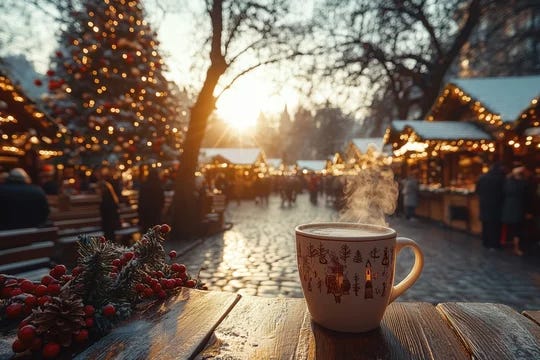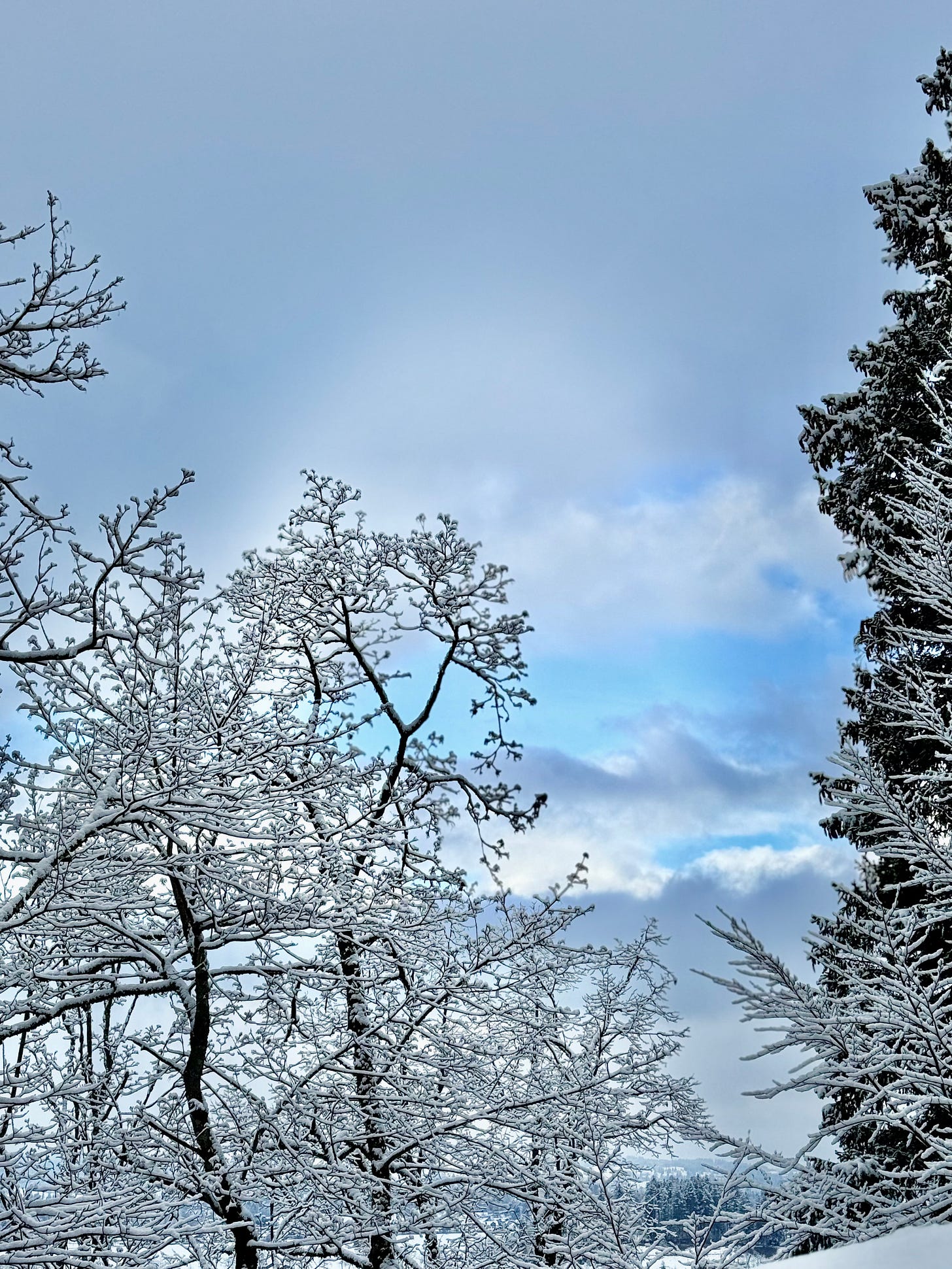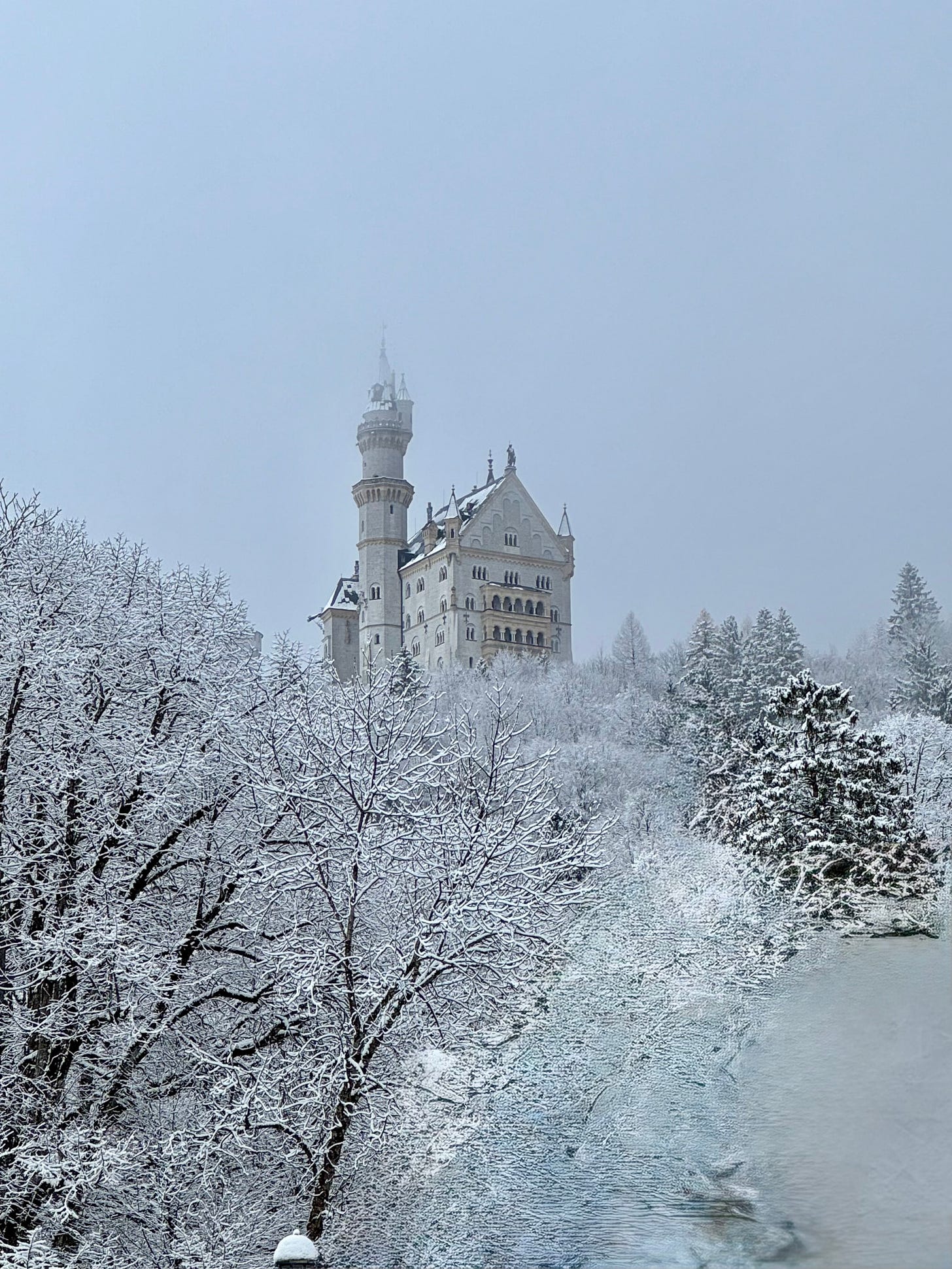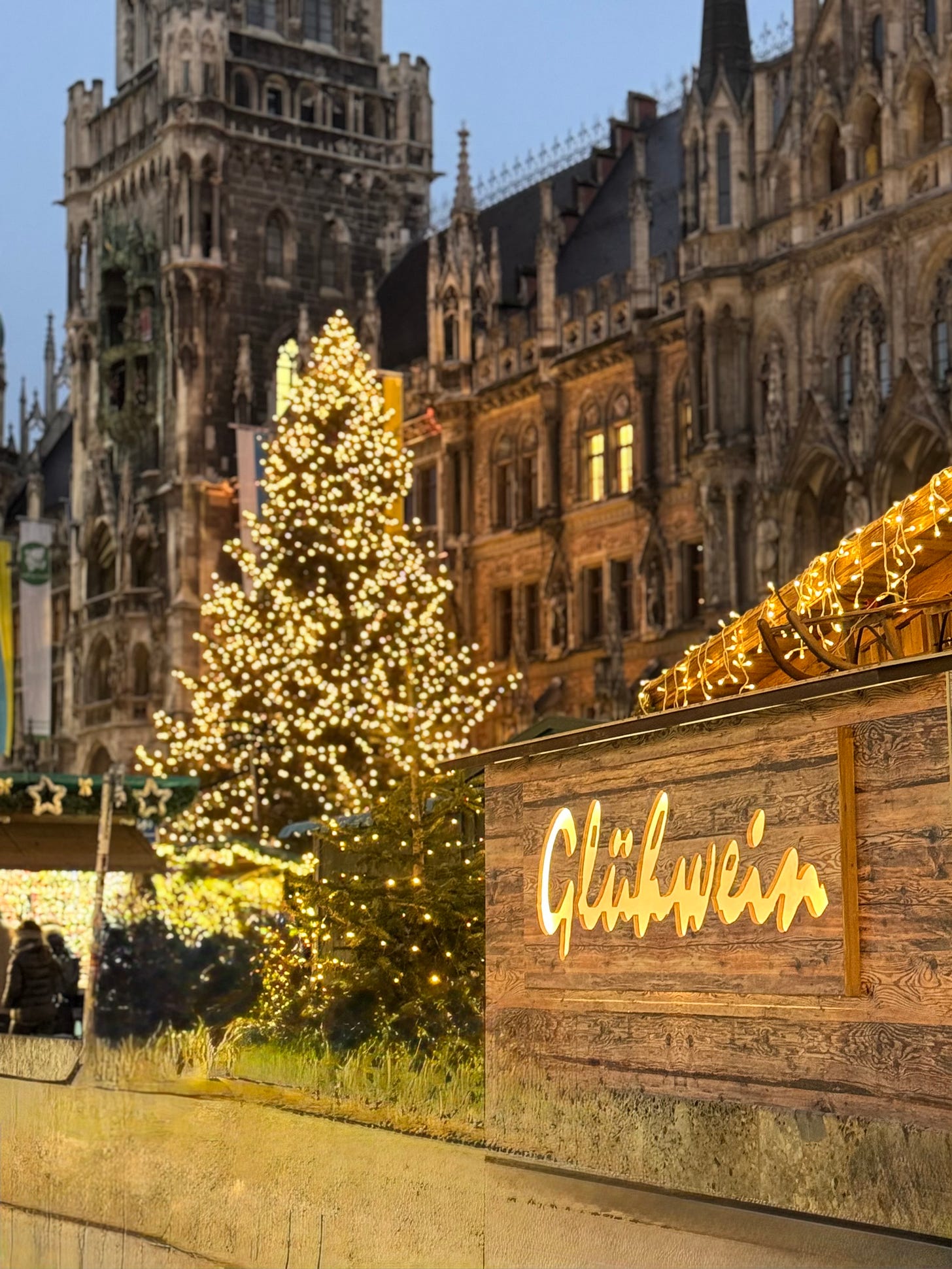Of castles, kings and dreamers
and a recipe for glühwein, the traditional German Christmas market tipple
Even Walt Disney couldn’t improve on the original.
We’re climbing the last long stretch of road to reach Schloss Neuschwanstein, perched high on a rugged hill above the village of Hohenschwangau. It’s that magical time of day when dusk hasn’t quite fallen, and the sun is playing peekaboo behind the mostly solid grey sky.
Since arriving in Germany fours days before, I’d climbed more stairs than I can count. This daunting path upwards seems equally unending, and my breath swirls in the crisp air like the long lost ghosts of courtiers and privy counsellors. Still, I soldier on, the white towers above me beckoning with promises of visions grand and unrealized.
A fairy tale castle and a swan song
Neuschwanstein, conceived but not completed by King Ludwig II, stands white and austere high in the Bavarian hills.
Ludwig ascended to the throne at 18, and from the start of his short and troubled reign, he increasingly retreated to an inner world and then sought to build a place for it. The castle was a deeply personal project, intended as a private refuge rather than a seat of royal power.
Envisioned as a fantastical retreat, the castle blends medieval knightly ideals with romanticism and opera themes. A devoted patron of composer Richard Wagner, Ludwig designed Neuschwanstein to reflect a world of legend and myth, incorporating murals and designs inspired by Wagner’s operas.
However, it was never fully completed due to Ludwig's untimely death. He met his mysterious and tragic end on a stormy June evening in 1886, his lifeless body discovered in Lake Starnberg beside his physician, Dr. Gudden. Officially declared a suicide, the circumstances of his death remain shrouded in doubt, with whispers of murder and conspiracy lingering to this day. Deposed as "mad" just days earlier, Ludwig’s final hours seemed torn from one of his beloved Wagnerian operas—a stormy crescendo of betrayal and fate.
Of time and place
As is so often the case with visionaries and dreamers, the time of their place amongst us can be fraught with misunderstanding and lack of acceptance. During his reign, Ludwig was often criticized and referred to as the "Mad King" due to his eccentric behavior, reclusive lifestyle, and extravagance.
Yet over time, Ludwig became known as the Fairy Tale King, and a much different legacy thus was born. His dreamlike vision endures in architecture, art, craftsmanship and fantasy. Neuschwanstein, the inspiration for Disney’s Sleeping Beauty Castle, set the gold standard for fairy tale design, influencing theme parks, movies, and even video games.
His romantic fusion of Gothic, Baroque, and nature-inspired aesthetics shaped the immersive worlds of modern resorts and luxury spaces. Inside his castles, Wagnerian murals and opulent details inspire set designs in opera, theatre, and film. Ludwig’s legacy of escapism and imagination continues to enchant creators, architects and storytellers around the globe.
A dream made real
As I reach the castle’s gates, I can’t help but feel the weight of Ludwig’s vision—unfinished, timeless, misunderstood, beloved. Neuschwanstein is more than stone and mortar; it’s a testament to the enduring power of dreams, a place where art, mythology, and nature converge in defiance of reality.
Though Ludwig never saw his vision fully realized, his castle, like his legacy, exists beyond completion, inviting us to imagine a world where beauty, imagination, and individuality reign supreme. Ludwig's Neuschwanstein was never just a castle. It was, and still is, a dream made real.
If you enjoy this weekly newsletter, please click on the ❤️ icon to like this post. This one gesture really helps to spread the word, and I appreciate it!
Glühwein
Go to any Christmas market in Germany, and you’ll be assailed with stall after stall selling warming glühwein. The word glühwein translates to "glow-wine" in German, and refers to the warm, glowing feeling the wine gives you when drinking it on cold winter days, though it originally described the glowing hot irons once used to heat the wine.
A staple of Christmas markets in Germany and Austria, this spiced drink warms shoppers and adds festive cheer to chilly winter nights.

Ingredients
1 bottle (750 ml) budget-friendly dry red wine
½ cup water
3 - 4 tablespoons Demerara or granulated sugar
8 – 10 whole cloves
2 cardamom pods
½ lemon, zest removed in wide strips (avoid white pith)
½ orange, zest removed in wide strips (avoid white pith) and juiced
3 cinnamon sticks
Place the cloves, cardamom, and citrus zest in a piece of cheesecloth and tie. Place the spices and the remaining into a large saucepan and bring almost to a simmer over low heat, stirring to make sure that the sugar is dissolved. Do not boil.
Lower heat to the lowest possible setting. Cover and let it steep for at least 1 hour; be sure that the mixture doesn’t boil or simmer.
Take out the cheesecloth with spices and serve in small mugs or cups.
Using a Slow Cooker
Heat the wine, water, and sugar in a saucepan until almost to a simmer. Stir to dissolve sugar.
Pour into a slow cooker and add the remaining ingredients tied in a piece of cheesecloth. Set slow cooker to low.
The glühwein is ready after one hour, but will keep hot until needed if kept on low. It will improve in flavour the longer it steeps.










Beautiful pictures
What a story and adventure! (and this recipe sounds delicious!)